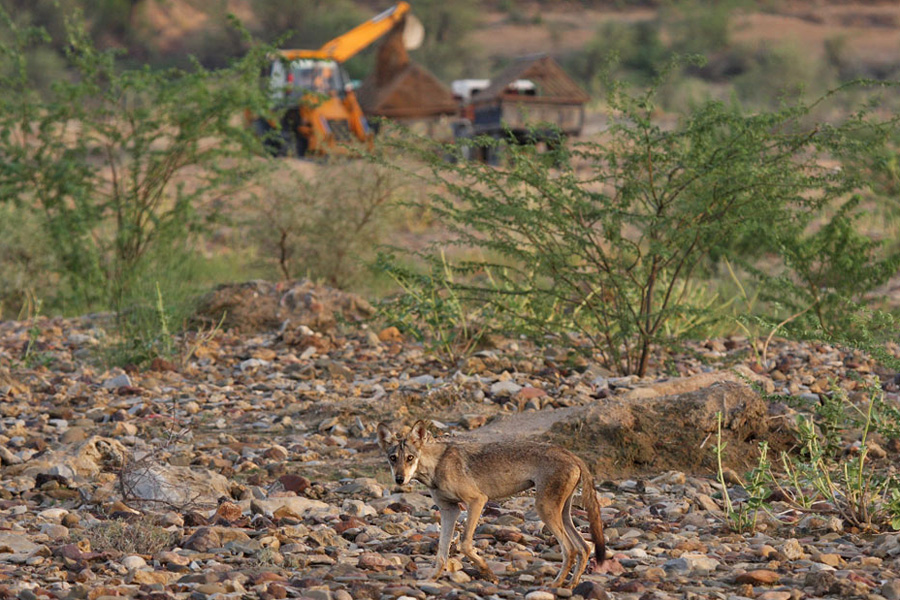
Chosen as 'Picture of the Week'
Despite the highest level of protection accorded to the wolves in India, hunting remains rampant and is a major cause of concern. Killing of adult wolves and pups by local sheepherders is common throughout the range of the wolf. Conflict with humans for livestock depredation, depletion of prey species (like blackbuck, hare) due to livestock, exaggerated public fear regarding their danger, and fragmented habitats that are too small for populations with long-term viability are threatening their survival today.
The Indian Wolf (Canis lupus pallipes), is an endangered species in Schedule I of Indian wildlife according to the Wild Life (Protection) Act, 1972. It is also in appendix 1 of the Convention on International Trade in Endangered Species of Wild Fauna and Flora (CITES).
Despite the highest level of protection accorded to the wolves in India, hunting remains rampant and is a major cause of concern. Killing of adult wolves and pups by local sheepherders is common throughout the range of the wolf. Conflict with humans for livestock depredation, depletion of prey species (like blackbuck, hare) due to livestock, exaggerated public fear regarding their danger, and fragmented habitats that are too small for populations with long-term viability are threatening their survival today.
Here, in the ravines of the Banas River (a tributary of the Chambal) near the Keladevi Sanctuary that is located to the North-east of Ranthambore National Park, the wolves face additional pressures of agriculture (a new trend in the ravines) and sand-mining for the exploding National Capital Region (NCR) metropolitan area (that includes New Delhi, Gurgaon and NOIDA).

 CI is a non-profit, non-commercial portal that aims to facilitate wildlife and nature conservation by providing reliable information and the tools needed to campaign effectively.
CI is a non-profit, non-commercial portal that aims to facilitate wildlife and nature conservation by providing reliable information and the tools needed to campaign effectively.
Older Comments 1
Banas sand is supposed to the best for construction (fine sand) and a few hundred trucks are shipped to Delhi and around every day from between Tonk and Ranthambhore. Whew.